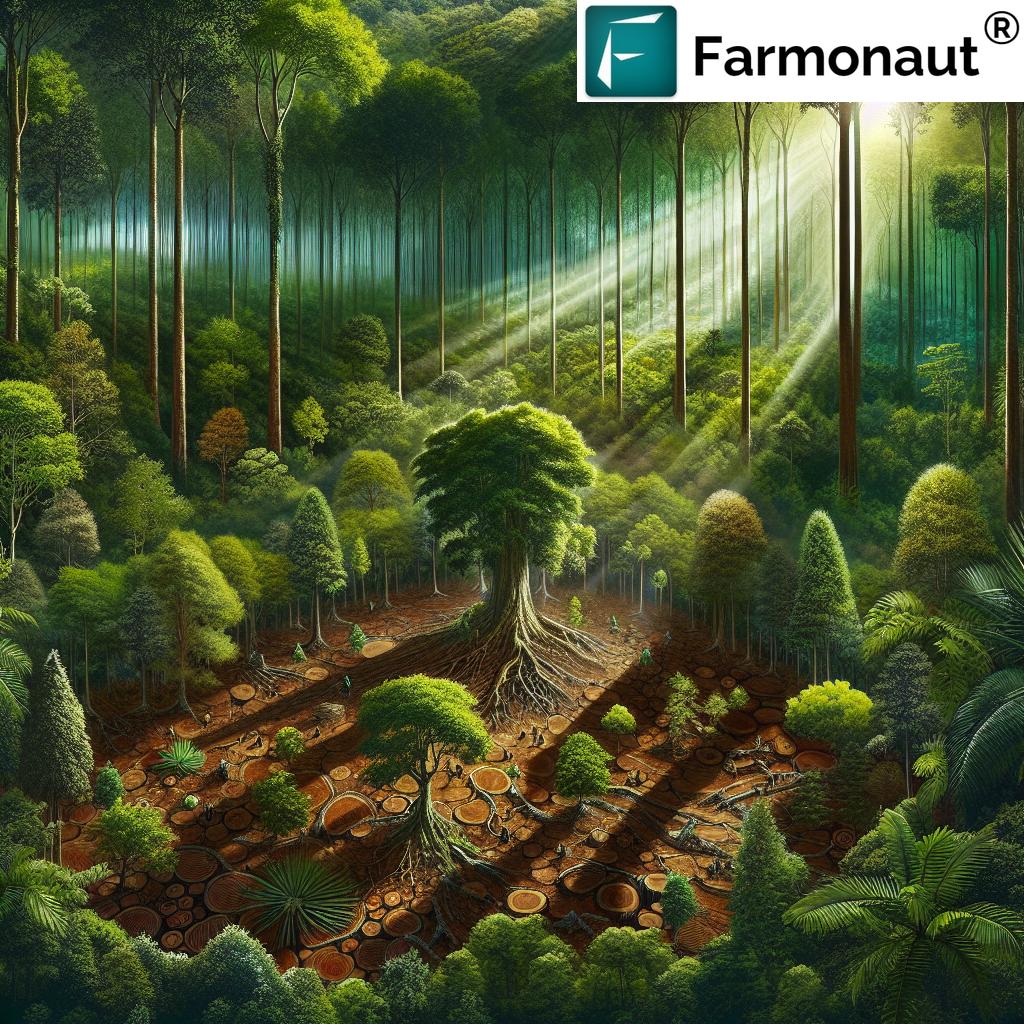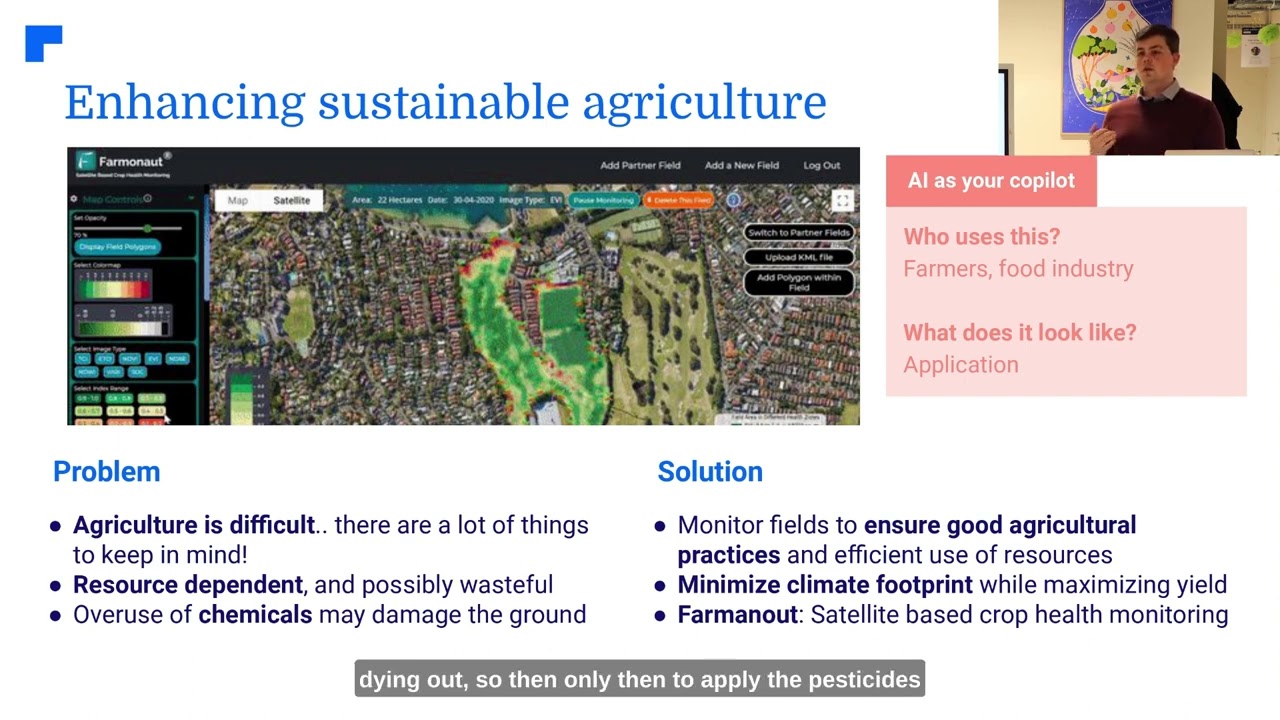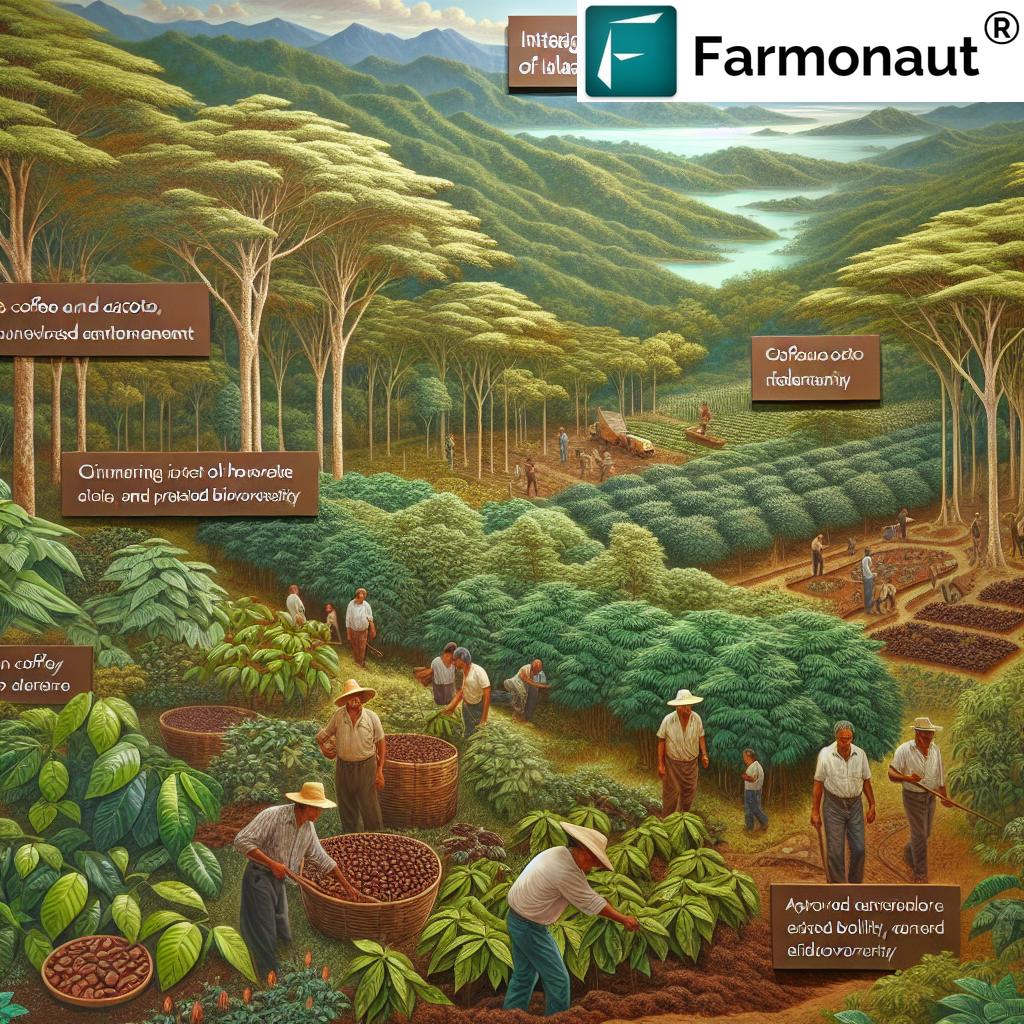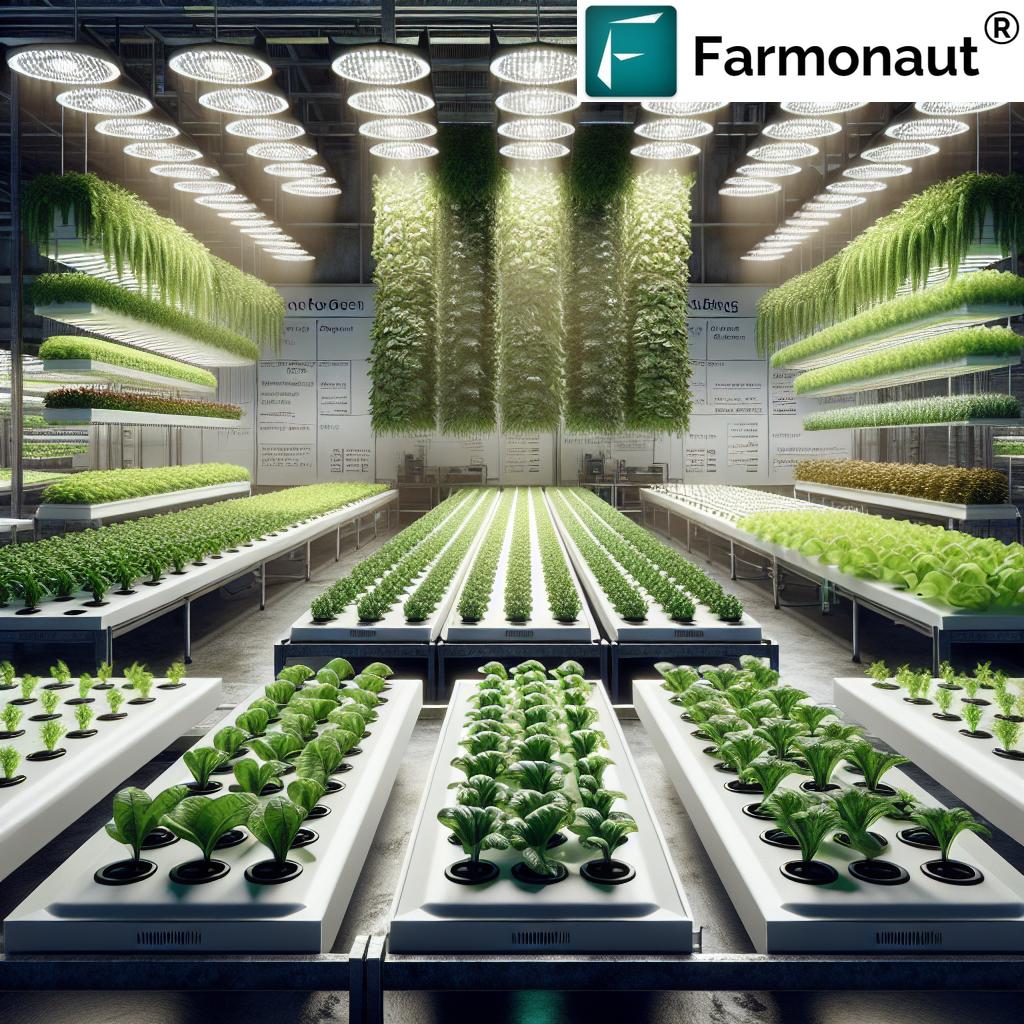“Sustainable forestry can increase forest carbon storage by up to 30% compared to conventional logging methods.”
Sustainable Forestry: 7 Shocking Benefits Revealed!
Welcome to our comprehensive guide on sustainable forestry and its transformative impact on forest management practices around the globe. As we confront increasing environmental pressures, deforestation, and the urgent need to preserve vital ecological resources, sustainable forestry emerges as a holistic approach to managing our forests for environmental, economic, and community benefits.
Through integrating advanced technology, science-based strategies, and community-driven processes, sustainable forestry ensures that we balance the current needs for forest products with preserving ecosystem health and resources for future generations.
In this blog, we’ll uncover the seven most shocking benefits of sustainable forestry, explore the guiding principles, highlight effective management strategies, discuss real-world implementation challenges, and show how Farmonaut’s solutions are helping us achieve these sustainable goals. Read on for actionable insights and data-driven details that will reshape your understanding of forests and sustainability.
Core Principles of Sustainable Forestry
At its core, sustainable forestry is guided by principles that seek to balance the needs of all stakeholders—nature, communities, and industry. To effectively conserve and utilize forest resources, our strategies are framed around three major pillars:
- Ecological Integrity: Safeguarding biodiversity, protecting soil fertility, maintaining water quality, and ensuring the resilient health of forest ecosystems.
- Economic Viability: Tailoring forest management practices so that forest products support local economies, generate opportunities, and promote regeneration rather than depletion.
- Social Equity: Prioritizing community involvement, local decision-making, respect for indigenous rights, and fair distribution of forestry benefits.
What Makes Forestry “Sustainable”?
Unlike unsustainable forestry, which exhausts resources and degrades habitats, sustainable forestry employs carefully designed systems for balance and regeneration. This includes:
- Adaptive practices based on scientific monitoring
- Reduced-impact logging choices
- Forest certification systems that assure responsible sourcing
- Community-based approaches (CBFM) that empower local stewards
- Integration of agroforestry practices for diversified productivity
By prioritizing the long-term health of forests and those who depend on them, sustainable forestry maintains a living balance between people, planet, and prosperity.
Key Sustainable Forest Management Practices
Our sustainable forestry efforts depend on practical, evidence-based forest management practices that are proven to serve both people and nature. Here’s how these methods maintain ecological health, soil fertility, and water quality while generating economic and social benefits.
1. Selective Logging
Rather than clear-cutting—which can devastate forest structure and biodiversity—selective logging removes only carefully chosen trees. This allows younger trees to thrive, enabling the forest to regenerate while maintaining critical habitat and soil stability.
2. Agroforestry Practices
By integrating trees, shrubs, and crops within agricultural landscapes, agroforestry not only increases yields but also boosts biodiversity, improves soil health, and diversifies community livelihoods. Classic examples include cultivating coffee and cacao beneath a timber canopy—providing both an income and improved ecosystem services.
3. Community-Based Forest Management (CBFM)
CBFM is a strategy in which local communities actively manage forests guided by their traditional knowledge and needs. By empowering those closest to the resources, communities experience better outcomes—from increased forest cover to measurable improvements in household income and food security.
4. Forest Certification Systems (FSC, PEFC)
Forest certification schemes such as the Forest Stewardship Council (FSC) and Programme for the Endorsement of Forest Certification (PEFC) set rigorous environmental, social, and economic criteria for timber production. Choosing FSC certification products ensures forests are managed sustainably, helping consumers support responsible stewardship.
7 Shocking Benefits of Sustainable Forestry
Discovering the benefits of sustainable forestry demonstrates just how essential responsible management is for local communities, climate resilience, biodiversity, and global sustainability.
“Community-based forest management has improved local incomes by 20% while preserving biodiversity in several regions.”
1. Massive Carbon Sequestration
Sustainable forestry enables forests to act as powerful carbon sinks, storing tons of CO₂ per hectare—far greater than conventional logging systems. Proper management practices, such as selective logging and agroforestry, improve the capacity of forests to absorb and lock away carbon, thereby mitigating climate change.
- Forests managed sustainably can increase total carbon storage by up to 30%.
- Every additional ton of carbon sequestered means progress against global warming.
- Verification through modern technology, like Farmonaut’s carbon footprinting tools (learn more), empowers smarter and more measurable sustainability efforts.
2. Rich Biodiversity Conservation
Through preserving forest ecosystems, limiting habitat fragmentation, and maintaining the natural mosaic of tree species, sustainable forestry contributes to rich biodiversity. Selective harvesting, protection of key habitats, and community involvement all lead to more robust animal and plant populations.
- Studies show increases in bird, plant, and insect diversity in sustainably managed forests.
- CBFM empowers locals to protect rare and endangered species, improving both resilience and ecosystem integrity.
3. Improved Water Quality and Soil Fertility
By maintaining healthy root systems and forest cover, sustainable forestry keeps soil in place, reduces runoff, and prevents sedimentation of rivers and streams. Nutrient cycling in managed forests supports continued fertility for future cycles of productivity.
- Forests filter water and store it for local and downstream communities.
- Agroforestry systems buffer fields from erosion and maintain productive soils for generations.
4. Reliable Resource Supply and Economic Growth
Sustainable forest management avoids resource exhaustion through regulated harvesting and regeneration, ensuring that timber, non-timber products, and ecosystem services are available for future economic development and local prosperity.
- Consistent wood, fruit, and medicinal plant yields support growth of local and international markets.
- Certified products such as FSC-certified timber command premium prices in global markets.
5. Community Empowerment and Social Equity
Community-driven models, particularly community based forest management (CBFM), give local people a direct voice in forest management decisions and benefits distribution. This approach has consistently led to higher livelihoods, reduced conflicts, and the preservation of indigenous traditions.
- Rural and indigenous groups are central to decision processes—increasing involvement and satisfaction.
- Local income can rise by up to 20% through better access to forest products and eco-tourism.
6. Strengthened Supply Chains through Certification and Traceability
Forest certification systems—like FSC and PEFC—offer assurance that products originate from sustainably managed forests. Transparent traceability, such as blockchain-based solutions, allows for product verification at every stage, ensuring authenticity and reducing the risk of fraud.
- Certified wood and non-timber products meet the expectations of environmentally conscious consumers.
- Traceability enhances trust and reputation for farmers, companies, and entire regions. Farmonaut’s traceability solution brings cutting-edge transparency to forest-derived products.
7. Environmental Resilience to Climate Change
Responsible forest management helps forests adapt to changing climate regimes, fosters resilience against drought and pests, and reduces vulnerability to catastrophic fires or floods. Through biodiversity, healthy soil, and community engagement, forests are better equipped for the uncertainties of tomorrow.
- Intact and diverse systems buffer the effects of weather extremes.
- Farmonaut’s real-time satellite monitoring and AI-based insights (learn how here) empower adaptive management strategies at scale.
Comparative Benefits Table: Sustainable Forestry’s Real-World Impact
The following table condenses the seven key benefits of sustainable forestry with clear, quantitative impact metrics. Each benefit not only enhances forest health and resources but also strengthens communities, economies, and environmental resilience.
| Benefit | Description | Estimated Impact |
|---|---|---|
| Carbon Sequestration | Forests absorb and store atmospheric CO₂, reducing global warming. | Up to 30% higher storage per hectare vs. conventional methods (See tracking solutions) |
| Biodiversity Preservation | Increased diversity of plants, insects, and wildlife. | Biodiversity index up to 22% higher in sustainably managed forests |
| Water & Soil Quality | Reduced soil erosion, improved river health, maintained soil fertility. | Soil erosion rates cut by 40%; nitrate runoff halved in riparian zones |
| Economic Continuity | Steady supply of timber and non-timber products without resource depletion. | Profits remain stable for decades; up to 18% premium on certified products (More on plantation/forest advisory) |
| Community Livelihoods | Empowered communities enjoy higher incomes and food security. | 20%+ rise in average income where CBFM is active (See benefit) |
| Certified & Traceable Supply Chains | Products verifiably sourced from sustainable, ethical forests. | Boosted market access and consumer confidence (Traceability tools) |
| Climate Resilience | Forests adapt better to changing weather and natural disasters. | 50% reduction in fire/drought-related forest loss with adaptive management |
How Farmonaut Empowers Sustainable Forestry
While policy and practice form the backbone of sustainable forestry, technology acts as the catalyst for measurable, scalable change. Farmonaut, an agricultural technology pioneer, brings a suite of advanced solutions for smarter, more sustainable, and efficient forest management:
- Satellite-Based Monitoring: Carbon foot-printing tools and NDVI analysis enable objective, scientific assessment of forest health, regeneration, and carbon sequestration.
- Blockchain Traceability: Farmonaut’s supply chain traceability creates transparent records “from forest to consumer”, ensuring provenance and accountability for every certified product.
- AI-Powered Advisory: Custom recommendations for sustainable practices, optimal harvesting, and regeneration, delivered via mobile and web app platforms.
- Resource and Fleet Management: Optimize forestry logistics, reduce carbon emissions, and cut costs with fleet management and large-scale farm management tools.
APIs for Developers: Integrate Farmonaut’s robust API and see full documentation here to build bespoke solutions for sustainable forestry projects.
Challenges in Implementing Sustainable Forestry
While the benefits of sustainable forestry are profound, there are undeniable challenges to implementation—from policy gaps to economic constraints:
- Policy & Governance: Ensuring supportive governance, land tenure rights, and clear policies around sustainable forestry remains a challenge in many regions.
- Economic Pressures: Immediate returns from unsustainable practices can tempt communities and businesses, risking long-term resource health.
- Climate Change: Unpredictable weather can disrupt regeneration and increase the risks for pests and fires, making ongoing adaptation necessary.
- Monitoring & Verification: Without robust measurement tools, progress toward sustainable goals can stall. Farmonaut’s monitoring (details here) ensures data-driven accountability in forestry projects.
Frequently Asked Questions (FAQs) About Sustainable Forestry
1. What is sustainable forestry in simple terms?
Sustainable forestry is managing forests in a way that maintains their biodiversity, productivity, and regeneration capacity over time while supporting economic development and community well-being. It ensures today’s use of resources doesn’t compromise their availability for future generations.
2. How does forest certification help the environment?
Forest certification systems (like FSC and PEFC) require sustainable practices, monitor compliance, and provide consumers with confidence that wood and non-timber products come from responsibly managed forests. Certified forests contribute to better biodiversity, water, and soil protection.
3. What are the main environmental benefits of sustainable forestry?
Environmental benefits include enhanced carbon sequestration, preserved biodiversity, improved water quality, soil erosion prevention, and climate resilience. These outcomes result from tightly managed, ecosystem-based forestry practices.
4. Why are communities important in forestry?
When local communities are engaged as stewards and beneficiaries, forests are managed more effectively and fairly, with higher rates of compliance, regeneration, and preservation of cultural values.
5. How does technology support sustainable forestry?
Technologies like satellite monitoring and blockchain traceability (as offered by Farmonaut) allow for precise measurement of forest health, carbon storage, product origin, and supply chain transparency, making sustainability measurable and actionable.
Useful Resources & App Links
- Farmonaut Carbon Footprinting: Measure, track, and reduce carbon emissions from forest and farm land use
- Product Traceability: Ensure authenticity and transparency throughout the forest supply chain
- Fleet Management: Streamline vehicle, equipment, and team logistics for forest operations
- Large Scale Farm/Plantation Management: Manage resources, productivity, and sustainability across extensive areas
- Crop Loan and Insurance Tools: Satellite-based risk assessment for loans and insurance on forest crops
Farmonaut Subscription Options
Choose the subscription module that fits your individual, cooperative, or business needs. Access everything from precision satellite analytics to AI-based forestry advisories, all through affordable, scalable plans suitable for farmers, agribusinesses, and government agencies.
Conclusion: Our Sustainable Forestry Commitment
Sustainable forestry stands at the intersection of ecological stewardship, economic progress, and social inclusion. By implementing science-led forest management practices, engaging local communities, and embracing innovations like satellite analytics and traceability, we can secure the health and resources of our forests for generations. The future of forests—and all who depend on them—relies on a continuing commitment to sustainable, adaptive, and equitable management systems.
Let’s continue to make conscious choices, support sustainably managed forests, and leverage next-generation technology for a resilient, healthy, and prosperous planet.






















